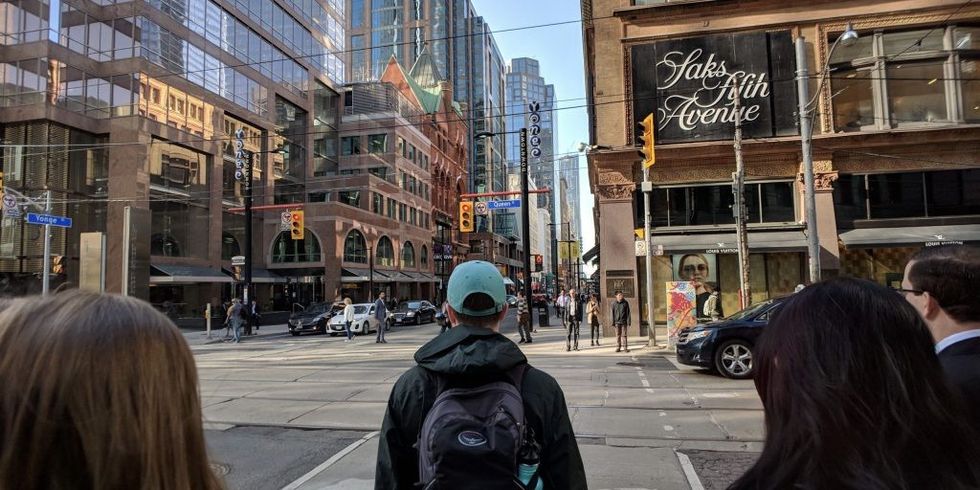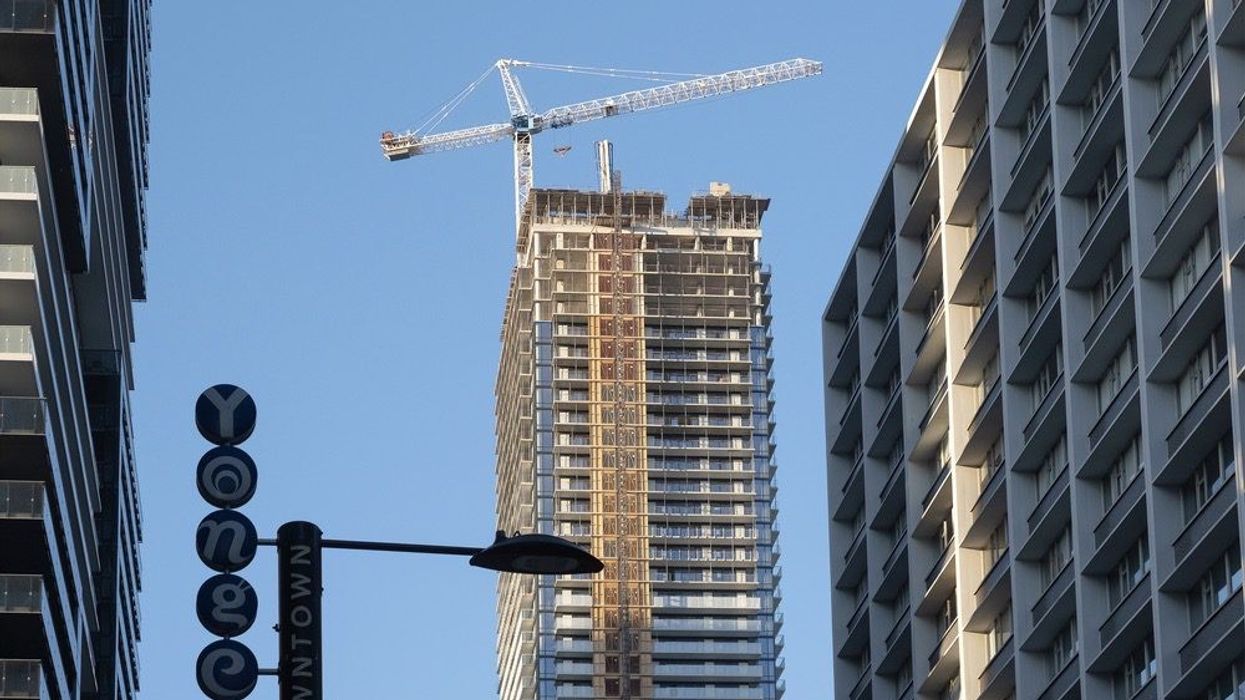Earlier this week, Toronto’s City Council approved the Inclusionary Zoning Official Plan by a landslide, but the development community is already panning the move because, they claim, it will only serve to exacerbate housing affordability woes.
The Building Industry and Land Development Association (BILD) supports Inclusionary Zoning (IZ) as a one-among-many tool that could help rectify the Greater Toronto Area’s housing affordability challenges, although the organization maintains that the ultimate solution is increasing supply. The Inclusionary Zoning Official Plan on its own is far from a panacea, David Wilkes, President and CEO of BILD, says.
“IZ a very good idea but we believe the City of Toronto has a bad plan, and because of the way it’s structured -- and it is unique within the North American context -- it doesn’t follow the recommendations of the city’s own consultants, so the cost of providing the affordable units in the city’s plan falls solely on new homebuyers,” Wilkes said. “We believe it is going to certainly increase costs for market-based units [around] anywhere from $68,000, and potentially reduce supply, which will compound the fundamental challenge we are all facing.”

Unlike other jurisdictions across the continent that have implemented Inclusionary Zoning, Toronto’s plan layers all the costs onto new projects instead of offsetting them by lowering or exempting levies like development and parkland charges, Section 37 contributions and other taxes, or even increasing building density as a means of lowering the burden on market-rate payers. There are other costs too, like materials and labour, which have surged during the COVID-19 pandemic, that could have been dispersed across additional units if City Council had conceded more density, Wilkes says. But it didn’t and, consequently, subsidizing the affordable units, which are capped at 10% in buildings affected by Inclusionary Zoning, are the remaining 90% of units.
“To me, the way I like to summarize it is it’s a good idea but a bad plan, and it’s a bad plan because it expects one group in society, new homebuyers, to shoulder the costs for providing below-market housing, and that could be up to $68,000 per unit. We think it’s going to have a lot of unintended consequences,” he said.
Ward 12 City Councillor Josh Matlow isn’t buying the argument, though, stating that the vast preponderance of units built by the development industry are too expensive for the majority of the city’s citizens.
“I’ve heard this in the past -- any time there’s any request made of the development industry to help with affordability, the first threat that will come up is ‘We’ll have to pass it onto the customers,’” Matlow said. “First of all, they don’t have to, that’s their threat, not ours, but moreover, it’s a decision based on values. They have already built really expensive places.
“Developers won’t build unless they make a profit, so the question is: are they going to make a lot of money or a little bit less than a lot of money so that more and more people in our city, who can’t afford to live here, can have more places to live? I find them straw man arguments. We’re facing a housing crisis and we need to have more units that are in a price range people can afford.”
Although, Matlow isn’t entirely happy with the Inclusionary Zoning Official Plan either, but only because he says it doesn’t cover enough city ground. He does, however, concede that insufficient housing supply is the reason for exorbitant home prices and, echoing Wilkes, he says Inclusionary Zoning is only one tool when adding an entire toolbox is needed.

“It was a fairly milquetoast approach that we decided on [Tuesday],” Matlow said. “This could have been far more reaching, meaning we could have asked for more areas of the city to include and asked for more affordable housing in each building that would be approved, and council chose not to go there, which I was disappointed about.”
It is difficult to find fault in Matlow’s reasoning that ownership and rental prices in Toronto are too high. He cited one among myriad conversations he claims to have had with born-and-raised Torontonians who have given up on the dream of homeownership, some even musing they will have to leave Toronto.
However, Scott McLellan, Senior Vice President of Plaza Corp. in Toronto, pilloried Matlow’s suggestion that developers accept slightly smaller profits, adding that developers have nary a choice but to spread the Inclusionary Zoning subsidy across the remaining 90% of units lest they imperil their own ability to secure construction financing.
McLellan says that City Council isn’t compromising on the suite of levies developers pay and that ensures market-based unit prices remain elevated. However, even more egregious, he added, is that first-time homebuyers usually buy condos and the Inclusionary Zoning Official Plan will worsen their struggles with affordability.
“Josh Matlow knows what our profits are, huh? That’s easy for him to say but our profits are generally in the neighbourhood of financeability. They’re not giving us a discount on those units or saying, ‘We’ll waive or renegotiate some of the charges we put on those units.’ This is all on us,” McLellan said. “Builders need to make a 10-15% profit margin to be financeable, and Inclusionary Zoning has a huge impact on that number, which means we have to spread them over the other units and now that makes them unaffordable. The condo market has always been the affordable alternative, as well as where people go to buy their first home, and when you start doing things like Inclusionary Zoning without removing any of the other costs that make housing unaffordable to begin with, it will make the condo market even less affordable.”

Mike Bowering, President of Mutual Developments, says developers are shouldering all the risk and that he doesn’t believe the city has thought out its Inclusionary Zoning plan very well. He added that the municipal government raised development charges by $1,000-2,000 per suite at the beginning of the month but that still pales in comparison to the hit developers will take in the Inclusionary Zoning Official Plan.
“What does that do to our business? Am I able to attract investors now to my building? I’m not sure construction lenders will be too happy because it’s going to affect our pro forma,” Bowering said. “I’m a medium-sized developer and I’ll be looking outside of the Inclusionary Zoning areas. Capital goes where it’s accepted and friendly, but if the whole city of Toronto becomes like that, it will slow down development. The biggest problem in the city right now is we cannot deliver enough product and that’s why prices are going through the roof. There are a lot of people who are going to move here and we can’t handle it. We can’t get our building permits in time, we can’t get approvals in time, and every time you turn around they’re increasing the costs. The biggest increases in development over the last 10 years are municipal costs.”
In the short-term, market units will become more expensive, Wilkes says, however, he’s especially concerned about the long-term ramifications Inclusionary Zoning could have on development in Toronto, North America’s fastest growing city, where housing is chronically undersupplied.
“We’re also concerned that, as Toronto becomes a high-cost area to build -- already 25% of the cost of a new home is reflected in government fees and taxes -- we will see that go up substantially with this proposal, and investment capital that looks at getting behind new projects that are much-needed in the city to bring supply up might look elsewhere where it’s not as expensive to build, whether it’s elsewhere in the GTA or across North America.”





















